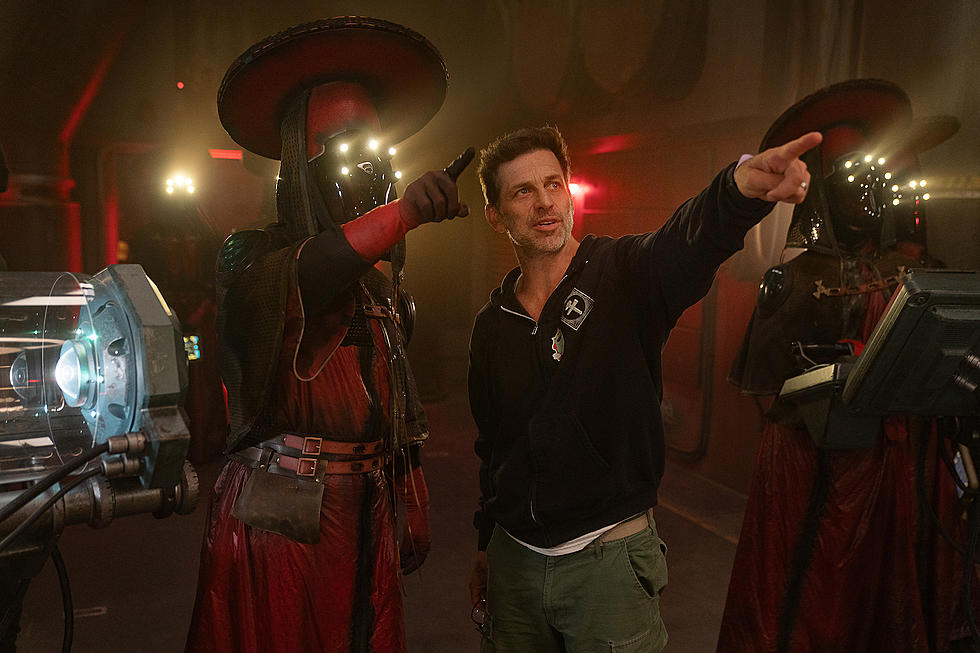
Review: ‘Orange is the New Black’ Season 3 Is Sadly, Perfectly Hilarious
Orange is the New Black has undergone a fascinating transition from 2013, first emerging in the infancy of Netflix original series programming, showing a tremendous amount of clarity and inspiration with its first trailer, and ultimately evolving beyond a central focus on Piper Chapman to a rich tapestry of powerful, funny and sad women. The second season advertised early on the introduction of a new big bad, while Season 3’s promotional ride has felt a bit less specific, and in a way, reminds me of another drama entering uncharted territory in Season 3, for good and ill.
A common structure of third entries will follow dark nights of the soul with a lighter, quasi-rebooted tone, something Orange is the New Black even takes the time to point out in its premiere, heralding a “kinder, gentler Litchfield.” Only months removed from the chronological start of the series (Season 1 ended around Christmas, while the premiere only opens as far as Mother’s Day), Season 3’s grass has literally become greener, lending even an aesthetically brighter tone to its dour predecessor.
The expansive roster of Litchfield ladies are all worth their weight in iron, and Season 3 has yet to buckle.
Not only that, but exposition only vaguely alludes to either Vee or Miss Rosa’s post-Season 2 fate, in some cases literally cementing and brushing over the crucial plot points of yesteryear. In the absence of either a central villain or much of a main narrative thread, the six Season 3 episodes screened for critics return to a character-driven focus, relying heavily on self-reflection and the threat of sadness simmering just beneath the surface.
Motherhood too plays a strong part in at least the first half of the season, not only by the varying emotions brought out in Litchfield’s Mother’s Day festivities, but a variety of angles. Different points see Crazy Eyes, Nicky and Big Boo (at long last getting a proper flashback) all dealing with absentee maternal figures, while Daya continually struggles with the push and pull of a growing family dynamic that bucks the confines of reality. The surprise introduction of Mendez’s mother (the always welcome Mary Steenburgen) paints motherhood as a shimmering beacon, while Daya’s own mother acknowledges that children both simultaneously bless and unwaveringly ruin one’s life. Others still let down surrogate mothers, or finally face prison reality rendering them powerless to influence their children’s lives.
It’s an intrinsically sad sensibility for a series that struggles to maintain its status as an Emmy contender for comedy, but evocative of the changing tone overall. The ladies of Litchfield are as raucous as ever, prone to random bouts of song or in-depth discussion of pubic hair accumulating in the bathroom corners, but levity only lasts for so long. A Caputo-led tour of Litchfield takes outsiders everywhere from a weeping Morello to Black Cindy cheerfully acknowledging “white people…and other,” simple shorthand for the hot and cold emotions running through the hallways at any given moment.
That inward reflection more or less replaces any outside threads this time around, as we seem to have seen the last of Larry or any other major storylines outside Litchfield, giving the series a focused, if occasionally claustrophobic feel. However relegated to a side character on equal footing with her fellow inmates, this year Piper’s attentions lie with acknowledging her own mistakes, either in reuniting with Alex (once-again fulltime Laura Prepon), or coming to terms with her own myopic view of others. Still, with Piper’s thread primarily (and literally) wrapped around Alex, the stage clears for even more unexpected spotlight and flashbacks than last year, including some surprising side characters, sometimes more than one per episode — and even the men get some attention.
That isn’t to say that Season 3 lacks for original elements, as the closest arc we have to a seasonal story brings some major changes to Litchfield bureaucracy, as well as a number of new characters who seem entirely too on the side of good to be true. New relationships and romances surface, dovetailing as far backward as season one arcs, while the first six episodes only offer a hint of major new and returning characters like Season 2’s Lolly (Lori Petty), sultry new inmate Stella (Ruby Rose), or Blair Brown’s Martha Stewart-esque public figure, soon sent down the river for tax evasion.
Six of 13 hours leaves plenty of ground left to cover, an odd prospect to review against an already odder notion that some may have completed the entire season less than a day from now. Still, Orange is the New Black has become a well-oiled machine at this point, even taking on a life of its own in the disparate struggles of women confined less by the law, and more the worse angels of their nature. There’s enough to absorb with the first six hours, and perhaps with somewhat less darkness, though the lack of central threads or external elements proves at least noticeable early on.
The premiere sees a beleaguered Caputo instructing a new officer that these are “complicated ladies in a complicated place,” an apt, if vague outlook on Orange is the New Black as a whole, but any absent specificity is quickly assuaged by the depth of character on display this year. The expansive roster of Litchfield ladies are all worth their weight in iron, and Season 3 has yet to buckle for it.
Orange is the New Black Season 3 is currently available (early!) on Netflix Instant.
Check Out 100 TV Facts You May Not Know!
More From ScreenCrush









